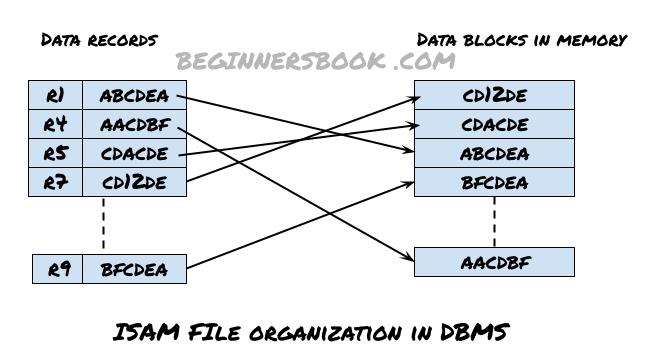Indexed sequential access method also known as ISAM method, is an upgrade to the conventional sequential file organization method. You can say that it is an advanced version of sequential file organization method. In this method, primary key of the record is stored with an address, this address is mapped to an address of a data block in memory. This address field works as an index of the file.
In this method, reading and fetching a record is done using the index of the file. Index field contains the address of a data record in memory, which can be quickly used to read and fetch the record from memory.

Advantages of ISAM
- Searching a record is faster in ISAM file organization compared to other file organization methods as the primary key can be used to identify the record and since primary key also has the address of the record, it can read and fetch the data from memory.
- This method is more flexible compared to other methods as this allows to generate the index field (address field) for any column of the record. This makes searching easier and efficient as searches can be done using multiple column fields.
- This allows range retrieval of the records since the address file is stored with the primary key of the record, we can retrieve the record based on a certain range of primary key columns.
- This method allow partial searches as well. For example, employee name starting with “St” can be used to search all the employees with the name starting with letters “St”. This will result all the records where employee name begins with the letters “St”.
Disadvantages of ISAM
- Requires additional space in the memory to store the index field.
- After adding a record to the file, the file needs to be re-organized to maintain the sequence based on primary key column.
- Requires memory cleanup because when a record is deleted, the space used by the record needs to be released in order to be used by the other record.
- Performance issues are there if there are frequent deletion of records, as every deletion needs a memory cleanup and optimization.
Leave a Reply